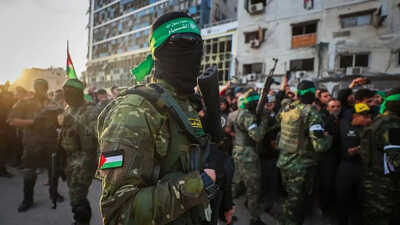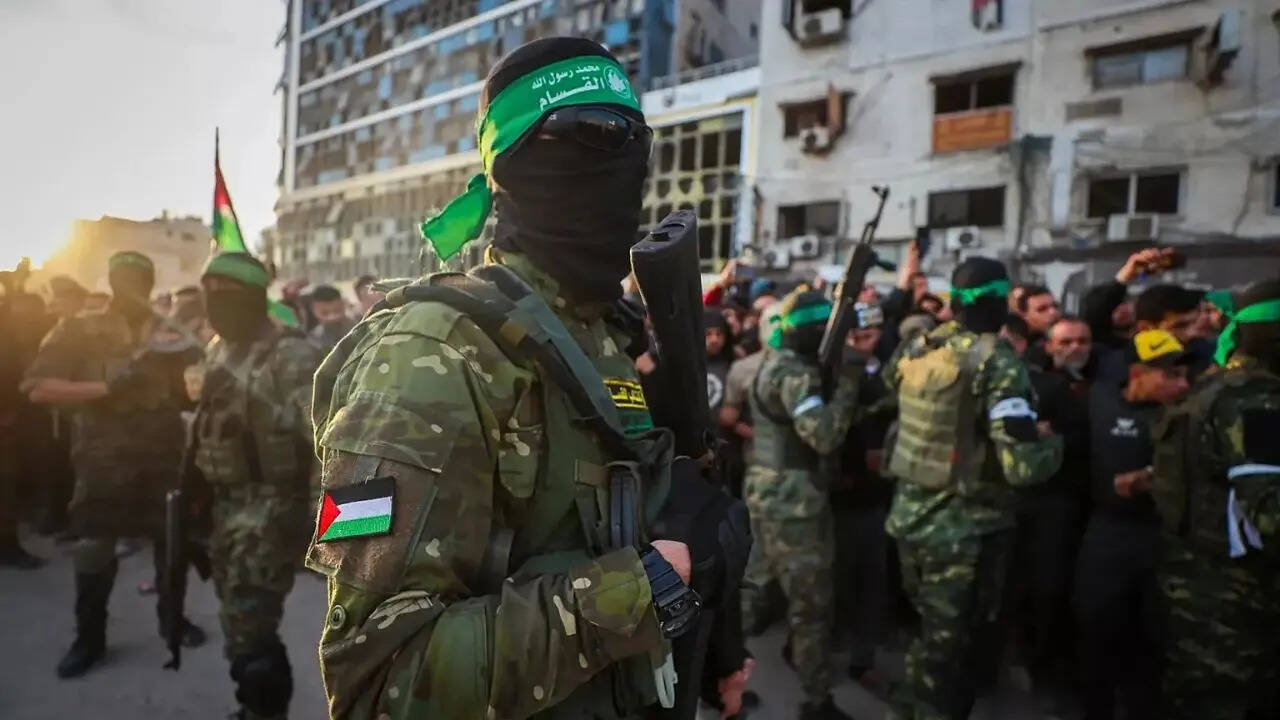Premium
More than two weeks after Donald Trump’s truce halted nearly two years of war in Gaza, a fragile peace hangs in the air. But behind this uneasy calm lies Hamas’s strategic plan – to use the ceasefire to rebuild, regroup, and legitimise its rule.

Weeks after Donald Trump’s Gaza truce, Hamas appears to be using the ceasefire to rebuild and consolidate control, drawing comparisons with the Taliban’s strategy in Afghanistan.
More than two weeks after US President Donald Trump-brokered truce halted nearly two years of relentless bloodshed in Gaza, an uneasy calm hangs in the air. But this fragile peace — achieved at the cost of countless lives and an uncertain future for Gaza’s people — may be playing straight into Hamas’s hands. The terror group, often likened to ISIS, is now pushing to legitimise its rule — just as the Taliban did in Afghanistan.
The baseline is: Hamas isn’t fading away — it’s preparing to rule Gaza.
What’s Hamas’ Real Goal?
Hamas leaders reportedly told Arab mediators in Cairo, where the ‘peace’ was finalised on October 10, that the group “won’t be erased” and that they are looking forward to having a say in ruling Gaza once the dust settles. In other words, Hamas’s participation in the truce isn’t a sign of surrender for them— it’s a strategic pause.
“Hamas wants to show that no one can dismantle it,” The Wall Street Journal reported quoting Avner Golov, a former Israeli national-security official. The terror group is “still the strongest actor in Gaza.”
By ‘negotiating’ with Israel with US President Trump in the centre, Hamas is betting it can solidify its legitimacy and reorganise its forces—but all without provoking Israel or a return to war.
What Is Trump’s Peace Plan vs. Hamas’s Reality
Trump’s 20-point plan, now entering its second phase, calls for a Hamas-free Gaza administered by a multinational force and local civilian councils. This part of the truce, Hamas has pushed back hard, demanding a 10-year truce and refusing to give up its weapons unless there are guarantees that the war will not resume.
To Hamas, the cease-fire is “an agreement, not a surrender,” the report said, quoting Hasan Abu Hanieh, an analyst based in Amman. Despite this ‘peace on paper,’ Hamas has continued to test Israeli defenses, prompting limited Israeli airstrikes in response.
In recent days, small Hamas units have carried out attacks and cracked down on rival armed groups inside Gaza. Alleged public executions have been reported across various media outlets. A gruesome video, reportedly shared by Hamas-affiliated channels, showed masked fighters — some wearing the group’s signature green headbands — executing blindfolded men in a public square in Gaza City as large crowds watched. It’s a chilling reminder of how the Taliban consolidated power — through violence in the name of religion, and the ruthless pursuit of control that followed.
This show of force also underscores the fact that it is Hamas that controls the streets of Gaza. Is peace coming at too high a price?
US Steps In to Keep the Peace, But For How Long?
The United States led by President Trump has dispatched its top envoys to keep the ceasefire intact though the signs of crack are already showing up. Special envoy Steve Witkoff, Vice President JD Vance, and Secretary of State Marco Rubio all visited Israel this week, calling for restraint. President Trump himself has warned Hamas saying, “We have a little situation with Hamas… that will be taken care of very quickly if they don’t straighten it out.”
A question: Did the Taliban back off despite the fact that a huge chunk of US troops were camped in the rugged terrain of Afghanistan for years? The end result: legitimate Taliban rule.
What Is Hamas’ Silent Strategy?
The ceasefire is possibly a cover for the terror group, which has been badly hit by Israel Defence Forces. Behind the scenes, Hamas has been quietly rebuilding its military brigades, appointing new commanders, and repositioning weapons near the “yellow line” — the zone separating Israeli and Hamas-controlled areas.
Going by the experts’ view, Hamas as of now are not eager to promote an escalation, but buying time to re-group, strengthen, and revive to rule. Michael Milshtein, a former Israeli intelligence officer, told WSJ that “all the things they are doing are causing clashes.” Truce tactics?
For Hamas, the ceasefire is less a peace deal and more a breathing space — a chance to restore control over Gaza, reorganise its forces, and reassert its claim as the territory’s true ruler.
What Is The US Proposal to ‘Divide’ Gaza And Its Possible Fallout?
The United States’ proposal to divide Gaza into two separate zones — one controlled by Israel and the other by the terror group Hamas — aimed at simplifying the process, is likely to make this more complicated. Under the plan, reconstruction would take place only on the Israeli-controlled side as a stopgap until Hamas can be disarmed and removed from power. The proposal echoes a similar “red zone” in Afghanistan, where the Taliban were supposedly cornered — yet from that zone, they ultimately expanded control over the entire country. ‘Red’ flag here?
Arab mediators, however, have a different concern. Strongly opposing the idea of dividing Gaza, Arab governments warn that the move could create a zone of permanent Israeli control. In the ongoing Israel vs. Hamas struggle, the Palestinians are likely to lose the most. Arab mediators also say they are concerned that Hamas’s leadership is fragmented after years of fighting and that rogue cells may be acting independently of political leaders in Cairo.
While Palestinians are desperate for peace, Hamas has agreed to Trump’s ceasefire not because it is giving up violence, but because it is playing the long game — using the time to rebuild, retain power, and ensure that they remain the ones calling the shots in post-war Gaza.


